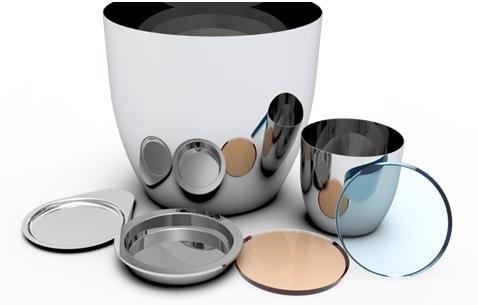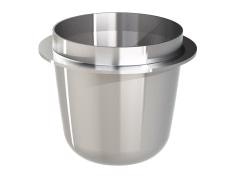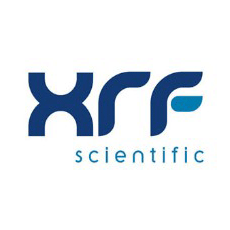
XRF Scientific is a globally leading manufacturer of platinum products and equipment for analytical applications, with over 40 years of experience in the advancement of x-ray fluorescence (XRF) flux production, and success over decades in producing customized fusion machines created for XRF and inductively-coupled plasma (ICP) analysis.
The experts at XRF Scientific and their experience of the application of analytical platinum supplies (APS) was evident even before the creation of XRF Scientific. Years of extensive experience has allowed XRF Scientific to utilize tried-and-tested techniques, while reducing pervasive issues with analytical laboratory products.
XRF Scientific has a wide range of fusion and general platinum labware, platinum electrodes, and anodes for electrochemical procedures, along with many precision semi-finished products for use in an extensive range of end-product applications.
Choosing a Platinum Crucible
Platinum crucible is one of the most useful tools of the analytical chemist. They are most often used in XRF sample preparation, ash testing, wet chemistry, and Loss on Ignition (LOI) applications.
Platinum crucibles are created with enough strength necessary for use in a chemical laboratory. Most often, platinum crucibles and their covers weigh around as many grams as they are in cubic centimeters. For example, a platinum crucible with a volume of 25 cubic centimeters weighs 25 grams and this includes the cover as well.
Making Platinum Crucibles
This production guideline outlines and reduces the density of the lower and side wall on the platinum crucible. The crucibles are produced from platinum sheets that have been shaped into discs or blanks, that are then rotated over forms of steel. During spinning, the discs are moulded with a follower that has a face coating the bottom of the crucible.
By doing so, the bottom of the platinum crucible always has the density of the sheet first used, and the crucible wall slowly becomes thinner from the bottom to the rim. Other procedures such as pressing or deep drawing can also be utilized to create the circular blanks of platinum crucibles.
Pure platinum and popular platinum alloys are frequently utilized to make crucibles. When using platinum-rhodium, crucibles are made from even smaller sheets as the alloy is more dense.
Platinum crucibles all have a very intricate crystal grain. Sometimes, the grain can be achieved by the delicate hammering of the metal after the process of spinning has been completed. Crucibles with the smallest crystal grain are thought to be those of the highest quality.
Crucible Care
Platinum crucibles can last a long time if they are maintained with the proper care. After using a crucible, it should be cleaned mechanically. Crucibles can be stored in water or in a 10% hydrochloric acid solution. Water serves to remove any salts, and hydrochloric acid changes oxides to chlorides, which are then cleaned off by rinsing.

Selecting a Crucible
Platinum crucibles provided by XRF Scientific are present in many different alloys. Pure platinum crucibles have a melting point of over 1770 degrees celsius. Crucibles created from 100 percent platinum have a greater resistance to deterioration by chemicals.
Platinum crucibles with 5 percent gold contain melting points of 1670 to 1750 degrees celsius which can be utilized in operations of up to 1200 degrees celsius.
This alloy has a higher strength when used in temperatures as opposed to 100 percent platinum. It also has a rare non-wetting character when encountering molten glass, and tends to have the easiest sample removal. This particular alloy is mostly considered to be the best material for spectrographic evaluation by x-ray fluorescence (XRF).
Platinum crucibles containing 3.5 percent or 10 percent rhodium have melting points from 1780 to 1850 degrees celsius. Rhodium alloys allow for a greater density and strength as opposed to other platinum alloys which makes them better for use in difficult environments. The greater content of rhodium in a platinum crucible, the longer it should hold under intense conditions.
Platinum crucibles with 10 percent iridium have a melting point of around 1790 degrees celsius. These enhance physical strength and the resistance to thermal corrosion, and the quality rises with the amount of iridium used in the platinum crucible.
Platinum Products with XRF Scientific
The platinum products available from XRF Scientific have been transported to a high number of facilities globally and for use in a wide range of applications. They mostly provide assistance to industry experts with labware and analytical tools for mineralogical analysis.
Mining and construction applications can also be extensively enhanced with hardy XRF and ICP analysis of samples, allowing for quantitative insights at the parts per million (PPM) range.
Platinum crucibles and moulds provided by XRF Scientific continue to find purpose in analytical spectroscopy for the use in locating and quantifying target minerals, for example copper or iron ore, in small geological samples.
These samples can be assessed non-destructively to predict and optimize the yield in high-throughput mining operations. Platinum products by XRF Scientific are also utilized in assessing the amount of oxidized compounds in raw cement powders that could reduce the longevity of the end-product.
The analysis of samples with even smaller amounts of ferritic compounds can cause a problem for platinum products. At higher temperatures, ferrite damages platinum, and can create long lasting corrosion which can create inaccuracies in measurements, and the premature failure of the component.

This information has been sourced, reviewed and adapted from materials provided by XRF Scientific.
For more information on this source, please visit XRF Scientific.